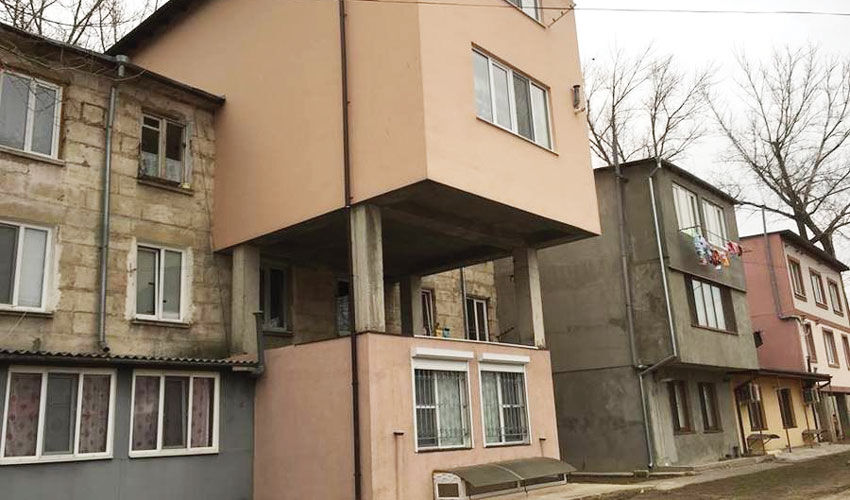
Excessive bureaucracy and administrative slowness were named as the main reasons for the lack of a lasting solution to the problem.
The process of legalization of unauthorized constructions is characterized by a cumbersome procedure involving many stages, uncertain deadlines and interdependence between institutions. This creates obstacles and often discourages citizens who try to legalize their structures.
Quite a large number of people have lived for decades in buildings built without documents or on land with unclear legal status. In many cases, the buildings were acquired under unofficial documents or agreements between the parties, without checking the original legality. This creates an ambiguous situation: legally, the building does not exist, but it is inhabited, connected to networks (often also unauthorized) and integrated into the urban landscape. The resolution of such cases is difficult because it involves interference with the property regime, possible litigation and complex legal clarifications in the absence of fast-track regularization tools or ad hoc commissions.
Current restrictive legislation is not effectively enforced, the study notes. Although the legal framework provides for strict sanctions for illegal construction (including fines and the obligation to demolish), enforcement of these measures is rare. On the other hand, the harshness of some provisions, which do not provide sufficient opportunities to rehabilitate or integrate already completed constructions, makes the application of the law in many cases unrealistic and unfair, especially for vulnerable families.
The phenomenon of informal constructions in Chisinau is a complex and multidimensional problem, reflecting both structural dysfunctions in public administration and the pressing social needs of the population. A sustainable solution to this problem requires a comprehensive strategy that goes beyond piecemeal solutions and requires consideration of all aspects – legal, urban, social and institutional.
A priority objective is to prevent unauthorized and uncontrolled alterations to existing apartment buildings. Interventions such as the construction of extensions, improper balcony closures, floor additions or remodeling that affect structural strength, jeopardize the safety of buildings and residents, degrade urban character and alter the quality of life in the community. The aim is to limit these practices through clear regulations and strict control, and to encourage the implementation of permitted interventions that comply with technical and urban planning standards.
Strict control of infrastructure networks (electricity, water, sewerage, etc.) is necessary. The uncontrolled expansion and use of technical and utility networks in areas with informal construction poses a serious risk to both public safety and the functionality of urban infrastructure. Therefore, an important task is to establish a strict system for monitoring and controlling connections to utility networks to prevent illegal connections and overloading.
Using the example of the Botanica sector of the capital, the authors propose a model for solving the problem of informal construction.
The Botanica sector, especially the area bounded by Valea Krucii, Cuza Voda and Sarmizegetuza streets, faces periodic interventions in public spaces through illegal additions, modifications of facades, occupation of sidewalks or conversion of garages into commercial facilities. Although less visible than illegal suburbanization, this phenomenon contributes to the degradation of the urban environment, undermining equitable land use and the authority of the city government.
The first step is to conduct a detailed physical and cadastral audit, inventorying all existing extensions and interventions, comparing this data with official urban planning documentation and the cadastral registry to determine which structures can be legalized and which require demolition.
Public discussions are then organized, during which options are proposed to tenants’ associations and owners, either to regularize the buildings or to redevelop them, with a view to finding solutions acceptable to all stakeholders.
Based on the data collected and public feedback, local guidelines are developed that establish clear and transparent criteria for legalizing changes, including standards for height, setbacks, safety and aesthetics, as well as neighborhood-specific urban integration models.
For this model to be applied effectively and sustainably, it is essential that it is supported by an adequate legal framework. Therefore, it is recommended that legal provisions be developed that allow for the legalization of informal buildings only after all the described assessment phases have been completed, including verification of technical compliance, integration into the urban context and obtaining the relevant permits. Pilot projects incorporating urban amenities such as street furniture, landscaped green spaces, etc. are then implemented in the vacated or reconstructed areas. In parallel, measures are applied that provide a grace period for voluntary legalization of structures with the administrative support of the local government. And in situations where legalization is not possible, sanctions are applied and illegal interventions are removed.
Finally, the results of the applied measures are monitored from an urban and social point of view, assessing the impact on the community and the urban landscape. This pilot model is ready to be expanded and replicated in other districts of Chisinau with similar problems.







